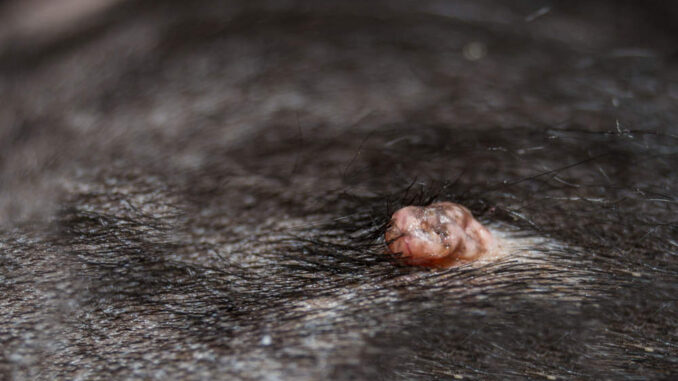
This article was updated on January 4th, 2024
In this article, we will discuss the common causes of raised bumps that grow over a dog’s skin. As veterinarians, we see many different conditions that cause these bumps, some of which are benign and pose no cause for concern, while others are cancerous. Let’s take a look!
Top reasons for (mostly single) raised lumps in dogs
Numerous types of lumps can be described as a ‘raised bump’ in or on the skin, including cysts, warts, skin tags, adenomas or malignant tumors like mast cell tumors and sarcomas. Below are a few pictures with links to learn more:
1. Cysts
Cysts are fluid-filled raised bumps that can grow over the skin. They’re common in dogs of all ages and can occur singly, or your dog could have several of them. These types of dog cysts can be tiny or grow up to an inch or more in size. Learn more about cysts.
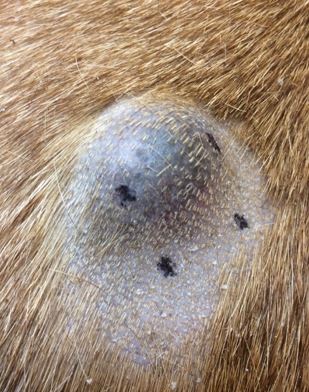
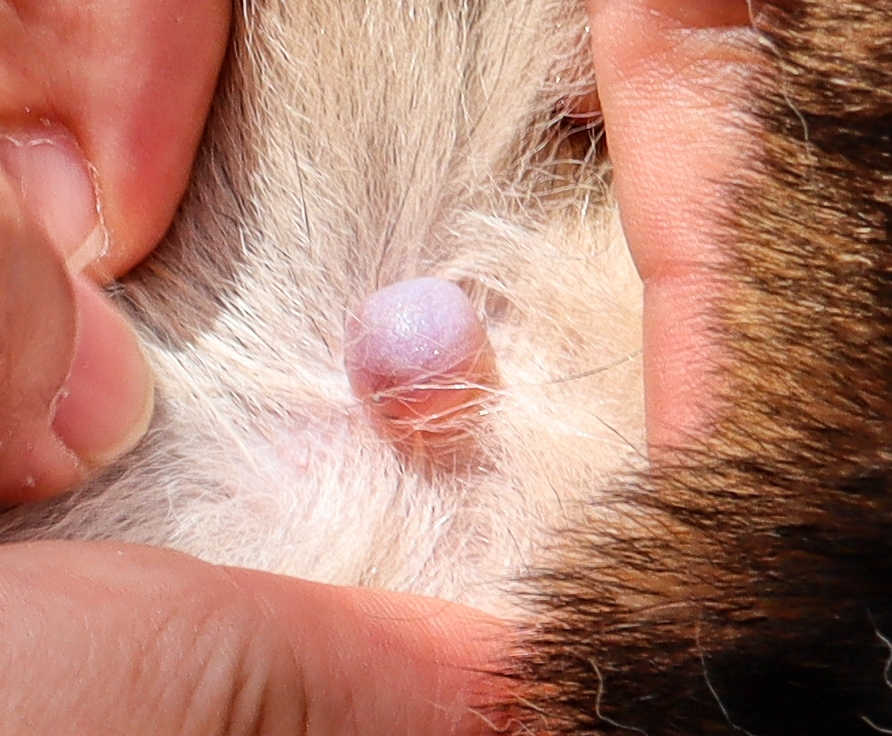

2. Adenomas
Sebaceous adenomas tend to grow outward on to the skin surface, resulting in raised bumps over the skin. The growths are usually 4mm to 10mm in size and sometimes they might extend below the surface of the skin. Removal is usually curative, but removal is not usually necessary unless it is getting infected or irritated. View more pictures of adenomas in dogs.
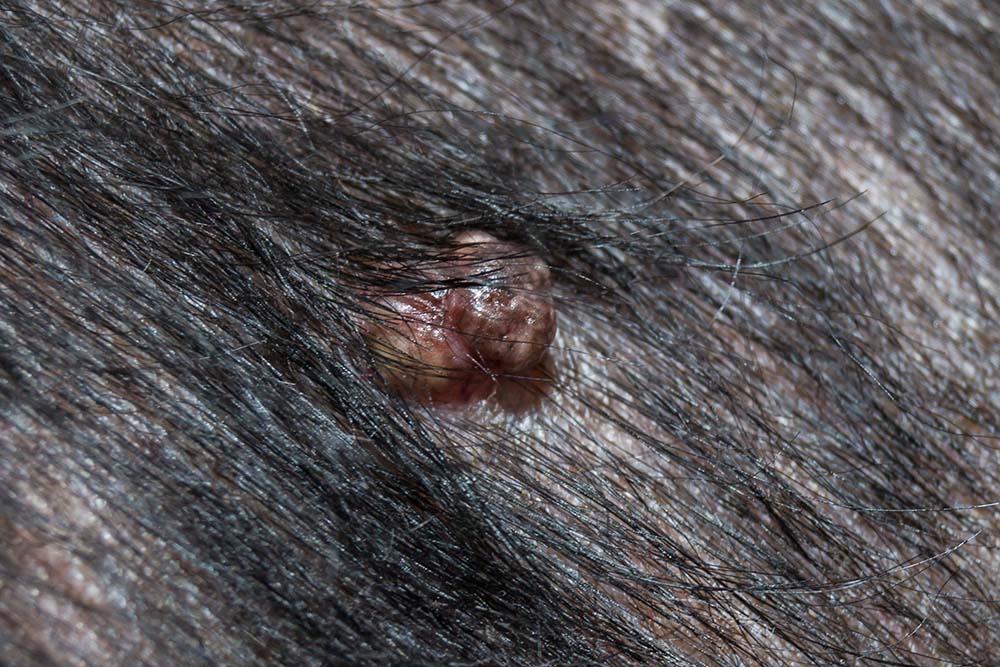
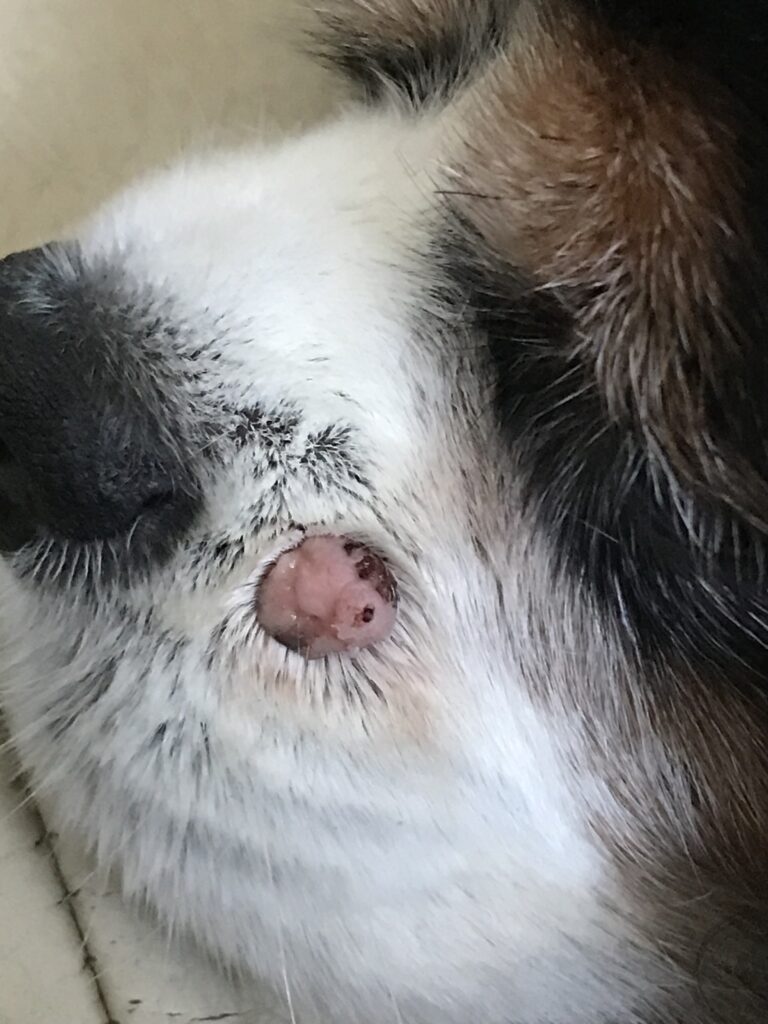
3. Skin tags
A skin tag is a benign growth that develops on the surface of your dog’s skin. They vary in appearance with a range of different sizes and shapes. Many skin tags are pedunculated – this means that they are attached to the skin via a narrow stalk leaving them dangling in space. Skin tags are non-cancerous and generally don’t cause any harm to your dog.
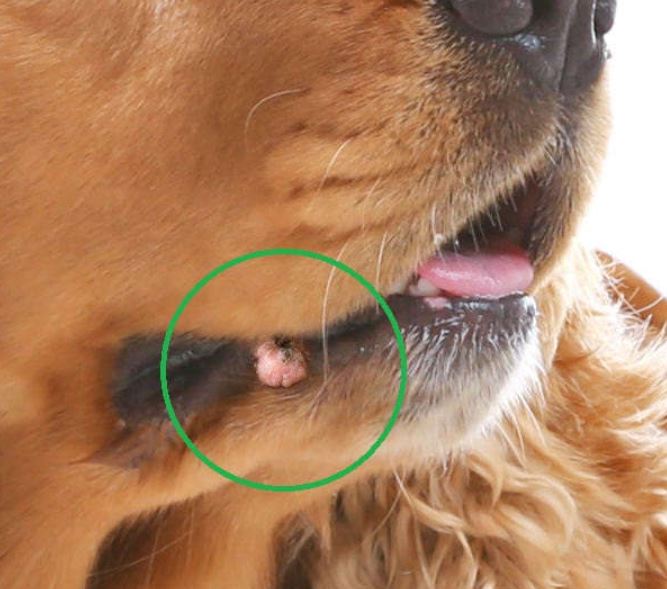
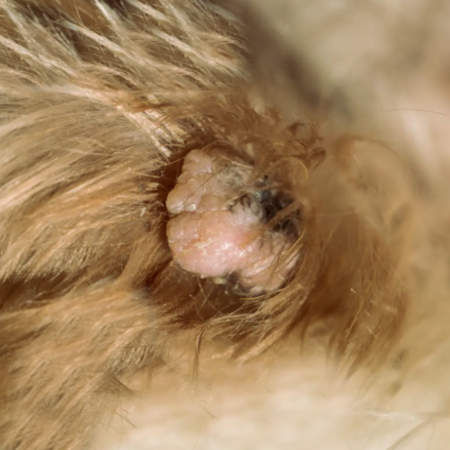
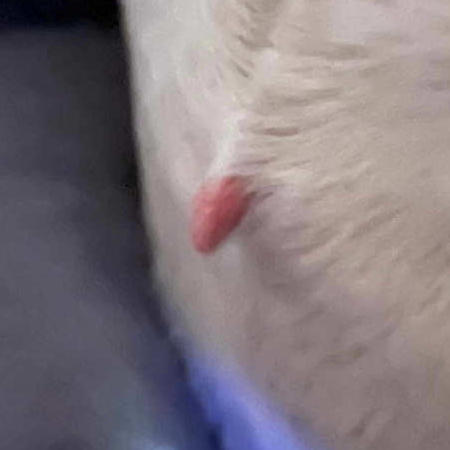
4. Raised cancerous growths
Although most dog lumps and bumps are benign, raised cancerous tumors can develop, and it’s often difficult to tell the difference between a benign or a malignant raised (cancerous) growth. Cancerous, or malignant, tumors of the skin can be small or large. They may itch or cause the senior dog some discomfort. They may do neither. Cancerous skin lumps or tumors in dogs include:
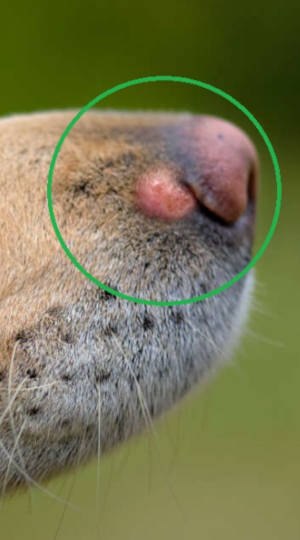
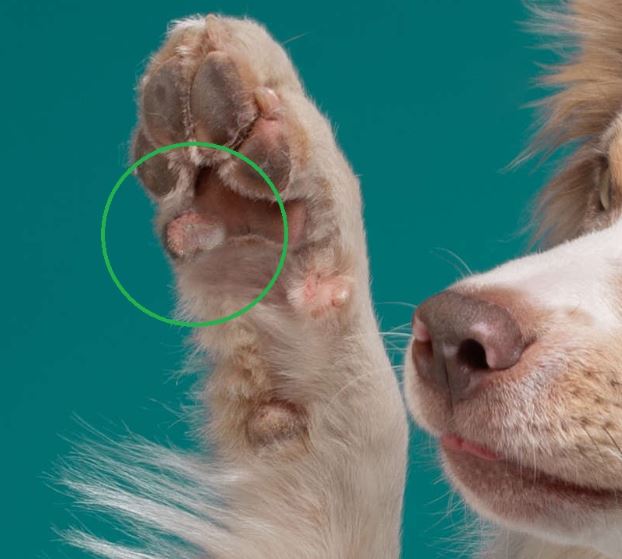
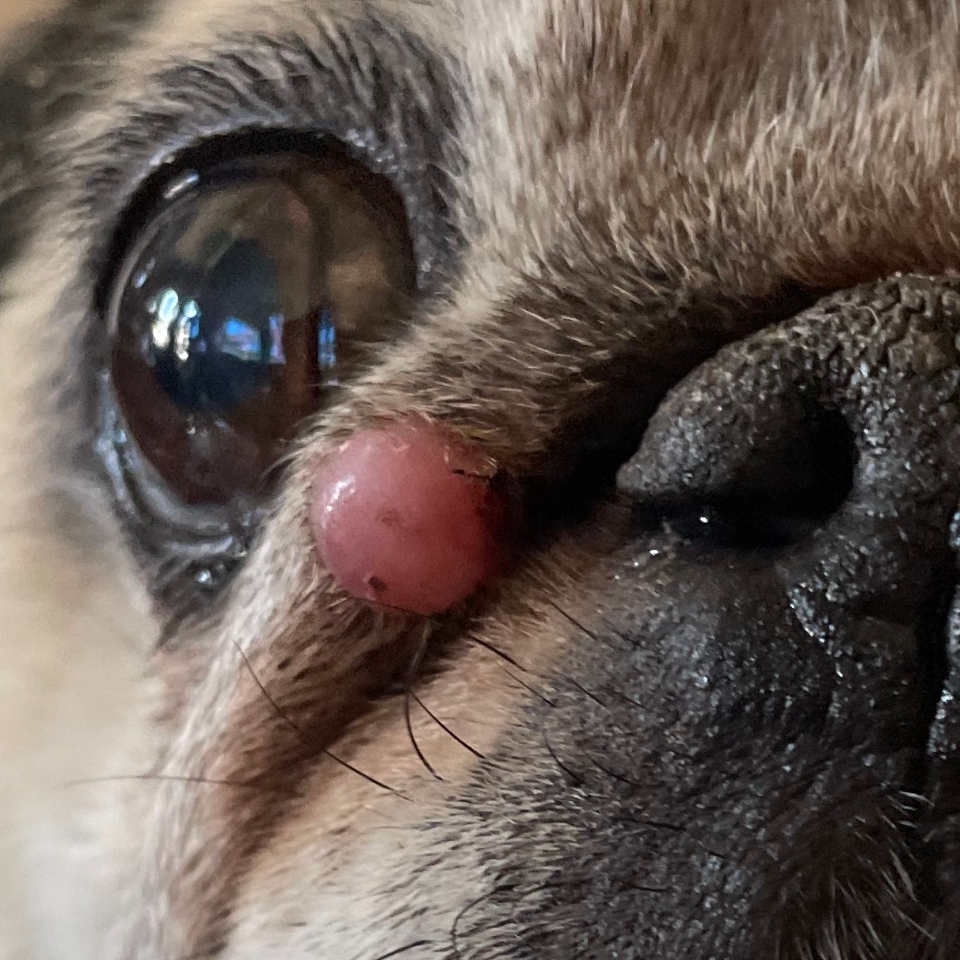
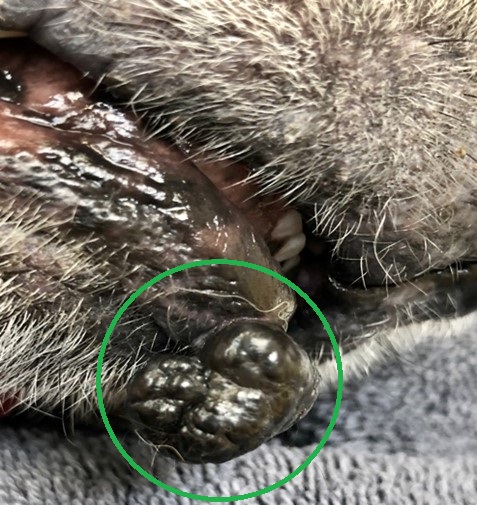
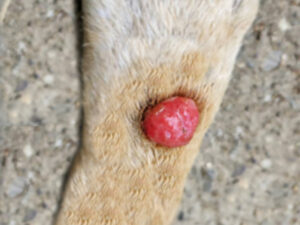
Learn more about malignant tumors in dogs.
“You can almost never say whether lumps are cancerous just by looking at them. However, there are signs that may indicate the possibility of cancer: Cancerous lumps often grow fast, feel firm, have irregular shapes, and cause discomfort. To be safe, see a vet and consider a biopsy to rule out cancer.”
Top reasons for multiple raised bumps growing over the skin
1. Warts
Warts can show up as a single small lump, or as a group or cluster of tiny lumps which look a little bit like a cauliflower floret. Older dogs tend to develop single warts, whereas puppies are more prone to multiple wart groupings, as shown on the pictures below. Learn about dog warts with pictures & treatment options.
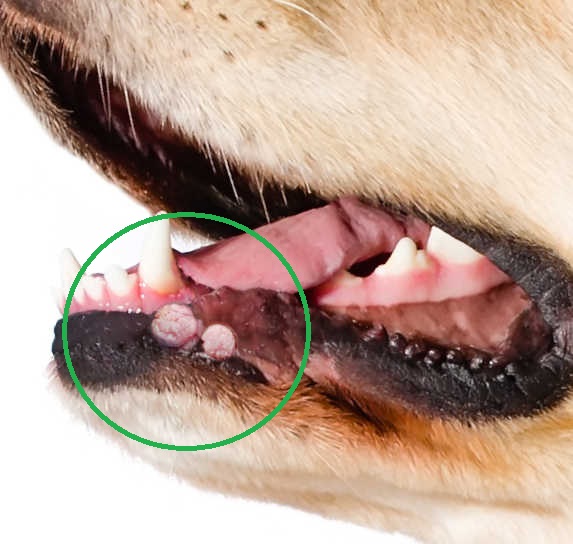
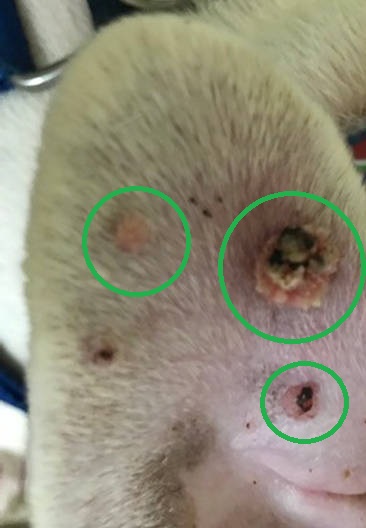
2. Infections
Bacterial skin infections (pyoderma) can be localized or affect large areas, causing itching, redness and little bumps (papules and pustules). Infections also cause hot spots and abscesses which can result in solitary raised bumps. A mild, localized skin infection could resolve with time but they frequently need veterinary treatment, including topical washes and topical or oral antibiotics.
Learn more about skin infections.

3. Hives
Allergic reactions – to foods, medications, insect bites or environmental allergens – can occasionally cause hives. These raised, itchy red welts can appear across large areas of your dog’s coat. Hives may resolve on their own – but if they’re severe or you notice other symptoms like facial swelling, breathing difficulties or vomiting and diarrhea, you should see your vet.
Learn more about allergy skin rashes or hives in dogs.
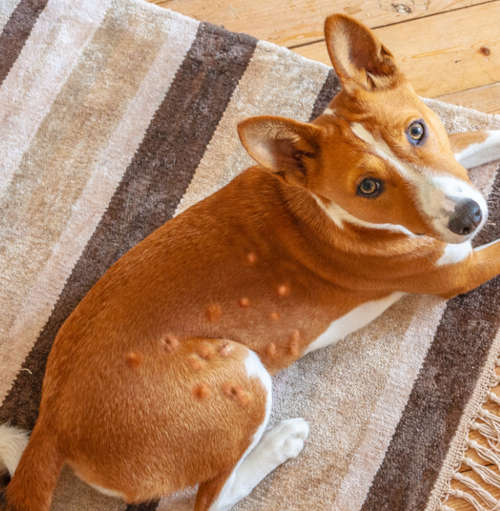
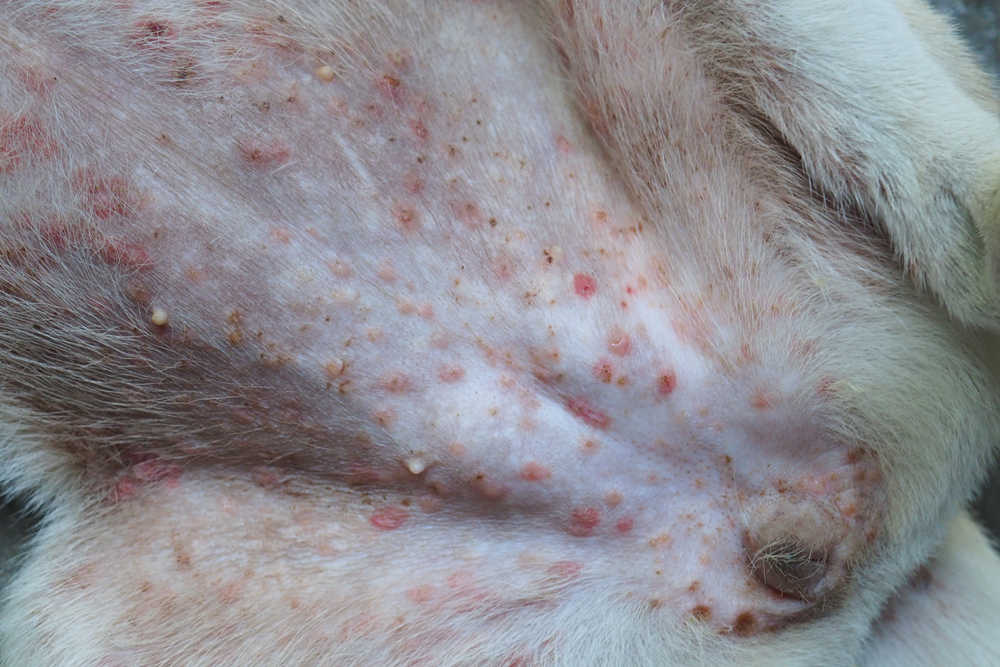
4. Insect bites and stings
Even if your dog isn’t allergic to them, insect bites and stings are a common cause of localized raised swellings, especially in the warmer months. It’s important to be aware of the insects in your area as some can be dangerous to dogs. Generally, swelling will resolve over a few days, though antihistamines from your vet may help. If you notice severe pain and inflammation, breathing difficulties, weakness, vomiting or collapse you should see a vet as soon as possible.
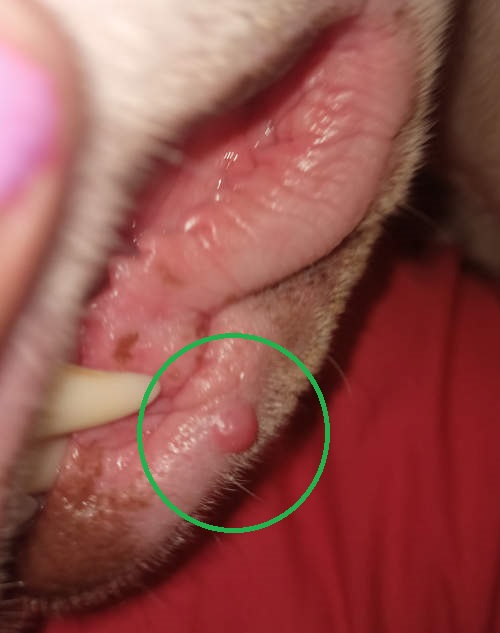
5. Parasites (fleas, mites, ticks)
Parasites – including fleas and mites – can cause widespread crusting, inflammation and an irregular, bumpy texture on your dog’s skin. They usually also cause itching and discomfort. If you suspect your dog has fleas, it’s worth trying a flea treatment. If their condition is severe or they don’t respond, it’s worth seeing a vet. Learn more about flea scabs and what dog mites look like.
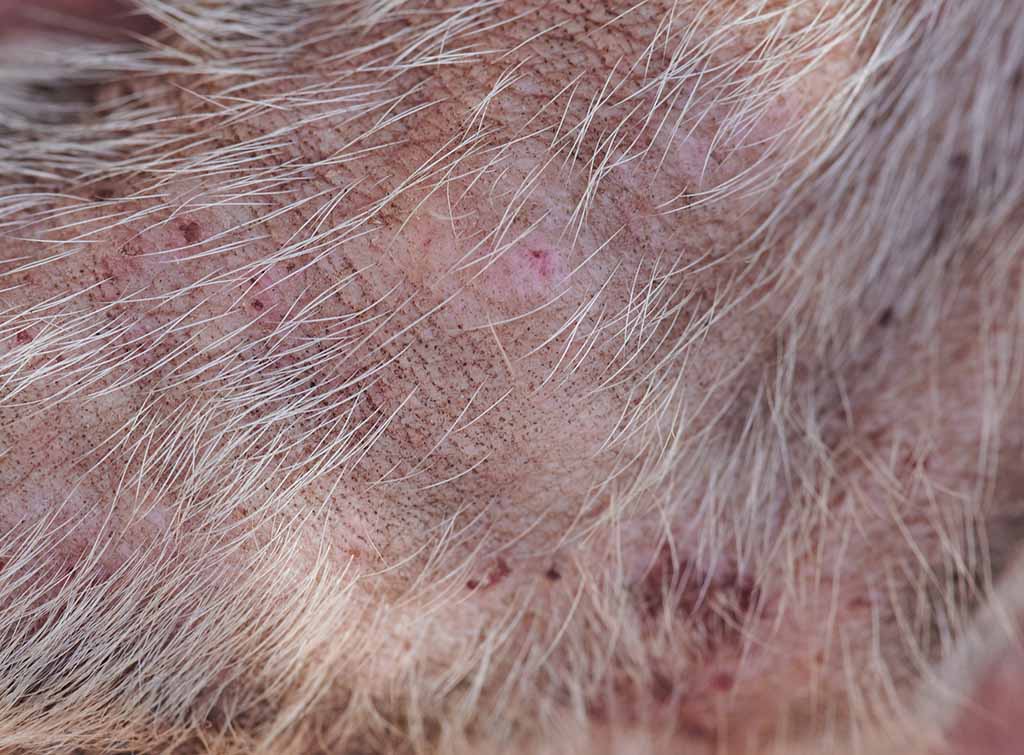
6. Contact dermatitis
Occasionally, we see contact dermatitis – frequently on exposed skin like the belly – where a dog has come into contact with a plant, cleaning material, chemical or other substance that has caused a reaction.

Symptoms include redness, itching and a rash of raised bumps or blisters. Secondary bacterial infections may also occur. It’s important to try to determine the cause – e.g. a specific plant or a new shampoo – so you can avoid it. In an acute flareup it’s worth seeing a vet to rule out other causes and treat the rash if needed.
Signs that you need to see your veterinarian
If your dog has a mild sting or a few pimples, you don’t necessarily need to rush to the vet. However, if their condition deteriorates – for example, their paw is swelling up significantly or their skin rash is spreading – you should see your vet.
If you ever notice raised skin bumps alongside symptoms like lethargy, gastrointestinal signs or breathing difficulties it’s essential to see a vet urgently.
Any new lumps or bumps that persist for more than a couple of weeks should also be checked out. Often, it is not possible to diagnose a new raised bump just by looking at it. Physical exams and diagnostic tests are required to confirm a correct diagnosis.
What will happen at the vet
For most of these conditions, your vet will recommend some medication – for example, topical or oral antibiotics, antihistamines and pain relief or anti-itch medications.
Sometimes, further testing like a skin scrape to identify bacteria or parasites may be required. A biopsy might be required to diagnosed potentially cancerous lumps.
Disclaimer: This website's content is not a substitute for veterinary care. Always consult with your veterinarian for healthcare decisions. Read More.



Be the first to comment